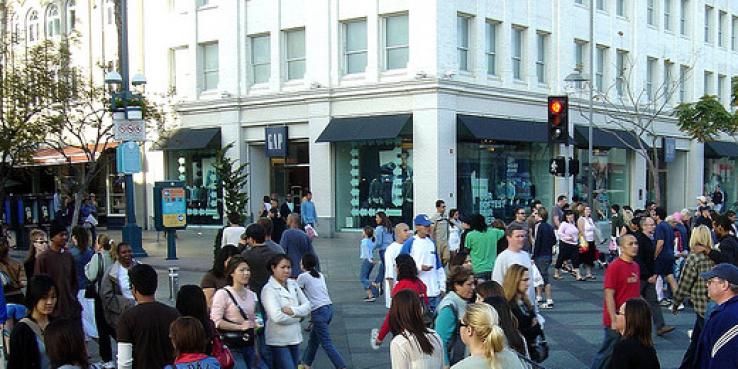In the 1970s, we crossed a global threshold when the rate of human demand for ecological resources began to outpace the rate at which nature could provide them. Today, we consume the equivalent of 1.5 earths in terms of the resources we use and the natural systems we rely on to absorb our waste. And if everyone on earth lived the lifestyle of the average American, we would need five planets.
How do we know this? By measuring our “ecological footprint,” a measure of natural resource consumption as a function of goods and services purchased. Using natural-resource accounting techniques, the balance of consumption for all countries is precisely measured against the world’s capacity to regenerate those resources. When combined with a mathematical input-output model, calibrated by socioeconomic and demographic data, the analysis can be performed at a wide range of scales: personal, household, factory, company, country, planet.
A few years ago, we invited Oakland-based Global Footprint Network — founded by Mathis Wackernagel, the creator of the environmental footprint concept — to present at a SPUR forum. After the forum, we got to talking about how a San Francisco footprint analysis could broaden the conversation around sustainable urbanism. Global Footprint Network’s staff was interested in bringing its largely international portfolio of footprint analyses closer to home. We put together a research plan and a steering committee, and received seed funding from the Wallace Alexander Gerbode Foundation.
The completed footprint study (PDF download) found that the average San Franciscan’s overall footprint was about 6 percent higher than the average American’s. But our average footprint was lower than you might expect since city dwellers generally have larger footprints (due largely to residents’ higher disposable incomes and greater levels of consumption). As you might guess, the categories where we exceeded U.S. averages were consumption of food, alcoholic beverages, restaurants and hotels, and transportation (the latter largely in moving and freight services, and in air travel).
Our work also revealed some universal principles about footprints as they relate to other geographic variables. Some of our analyses compare U.S. city footprints, including San Francisco’s, to urban density and average income to test how these variables affect sustainability. We found that a $1,000 per capita increase in purchases of goods and services correlates with a 0.09 global hectares per capita increase in footprint, while a 100 people per square mile increase in population density is associated with a 0.06 global hectares per capita decrease in footprint. So as a city becomes denser, we reduce our footprint, but as we become wealthier, we increase it. Is there always a tradeoff between quality of life, as measured by wealth, and the ecological footprint? Not necessarily. The pursuit of freedom, good health, fulfilling lives and a high standard of living — in other words, a high Human Development Index, a measure tracked by the United Nations — can accompany a wide range of footprints:
As this Global Footprint Network chart shows, some countries are doing a better job at this than others (hover your mouse over the moving dots to see the country names). Achieving true sustainable development includes both a high level of human development and a low ecological footprint.
In our study, because of data limitations, we had to aggregate results to the entire San Francisco Metropolitan Statistical Area, and not to the city of San Francisco. This was disappointing because we couldn’t determine the footprint outcome of city sustainability measures such as our high recycling rate, green building requirements, climate action plan and high level of transit ridership. It also limited the study in some areas and introduced error, because we had to use national averages rather than regionally specific production factors. For example, it doesn’t make sense that the San Francisco Metropolitan Statistical Area has an above-U.S.-average footprint for energy, water and other utilities. The majority of the water supplied to San Francisco, the Peninsula and the East Bay is delivered by gravity, and our energy utilities — public and private alike — are among the cleanest in the country. California also has much better energy-efficiency performance than the U.S. as a whole, so you would expect our utility footprint to be lower all around.
Our analysis, which includes suggestions of areas to pursue further, goes about as far as an initial footprint study realistically can. But this analysis could be used as a baseline for more issue-specific work. For example, at SPUR we will be delving into the food sustainability question — by far, the largest component of any U.S. footprint analysis — through the work of our new Food Systems and Urban Agriculture program, which launches next month.
Download the ecological footprint report >>
